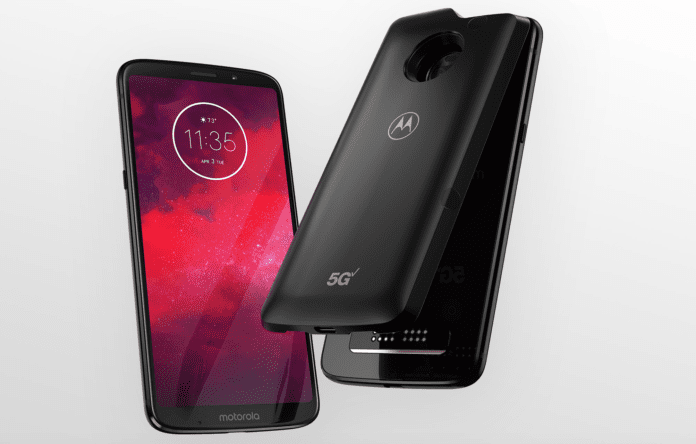5G mod launch planned to support Verizon mobile 5G offering
Last week in Chicago, Motorola, Verizon and Qualcomm partnered to announce the moto z3 and 5G mod that will allow the user to clip-on a device accessory that will allow it to connect to a millimeter wave-based 5G network.
The moto z3 device has one of Qualcomm’s X16 gigabit LTE modems inside. The X16 supports four-channel carrier aggregation, 256 QAM, 4×4 MIMO on two carriers and a peak download speed of 1 Gbps.
The mod has Qualcomm’s X24 gigabit LTE modem and an X50 5G modem, as well as four millimeter wave antenna modules and LTE antennas. The X24 features seven-channel carrier aggregation, 256 QAM, 4×4 MIMO on five carriers, FD-MIMO and has a peak download speed of 2 Gpbs. The X50 works with the millimeter wave modules to provide beam forming, beam steering and beam tracking, and offers a peak download speed of up to 5 Gpbs.
To better understand the dynamic between the device, mod and the three modems, RCR Wireless News spoke with Sherif Hanna, Qualcomm director of product marketing.
“The way to think of this thing is basically a USB-tethered hotspot that’s riding on the back of the moto z3,” he explained. “You’re tethering an accessory by USB. The mod needs to be able to operate completely independently of the phone. Because this is non-standalone 5G, you need both a 4G modem and a 5G modem to connect to the network.”
Verizon’s mobile 5G launch will be based on the non-standalone 5G New Radio specification adopted last year by 3GPP. Non-standalone contemplates an LTE RAN and core with the addition of 5G component carrier, whereas standalone 5G NR, adopted in December, comes with a whole new radio access and core network.
When the mod is connected, Hanna said, the X24 takes over to handle LTE, 3G, etc…”Once the mod is connected then the phone is completely dependent on the mod for data use.” The X16 in the device goes into a power-saving mode and essentially wakes up when there’s incoming traffic.

